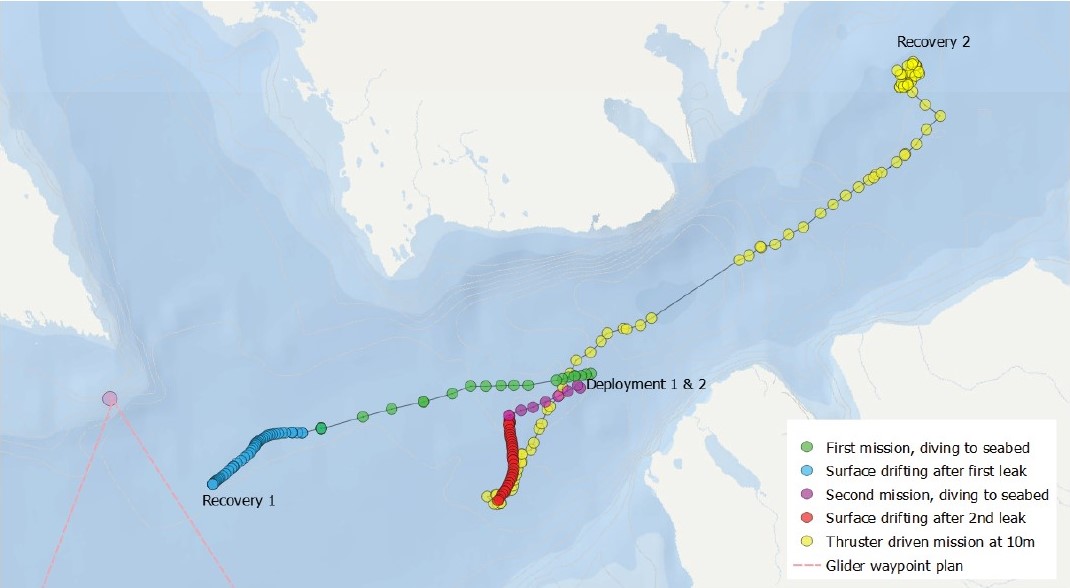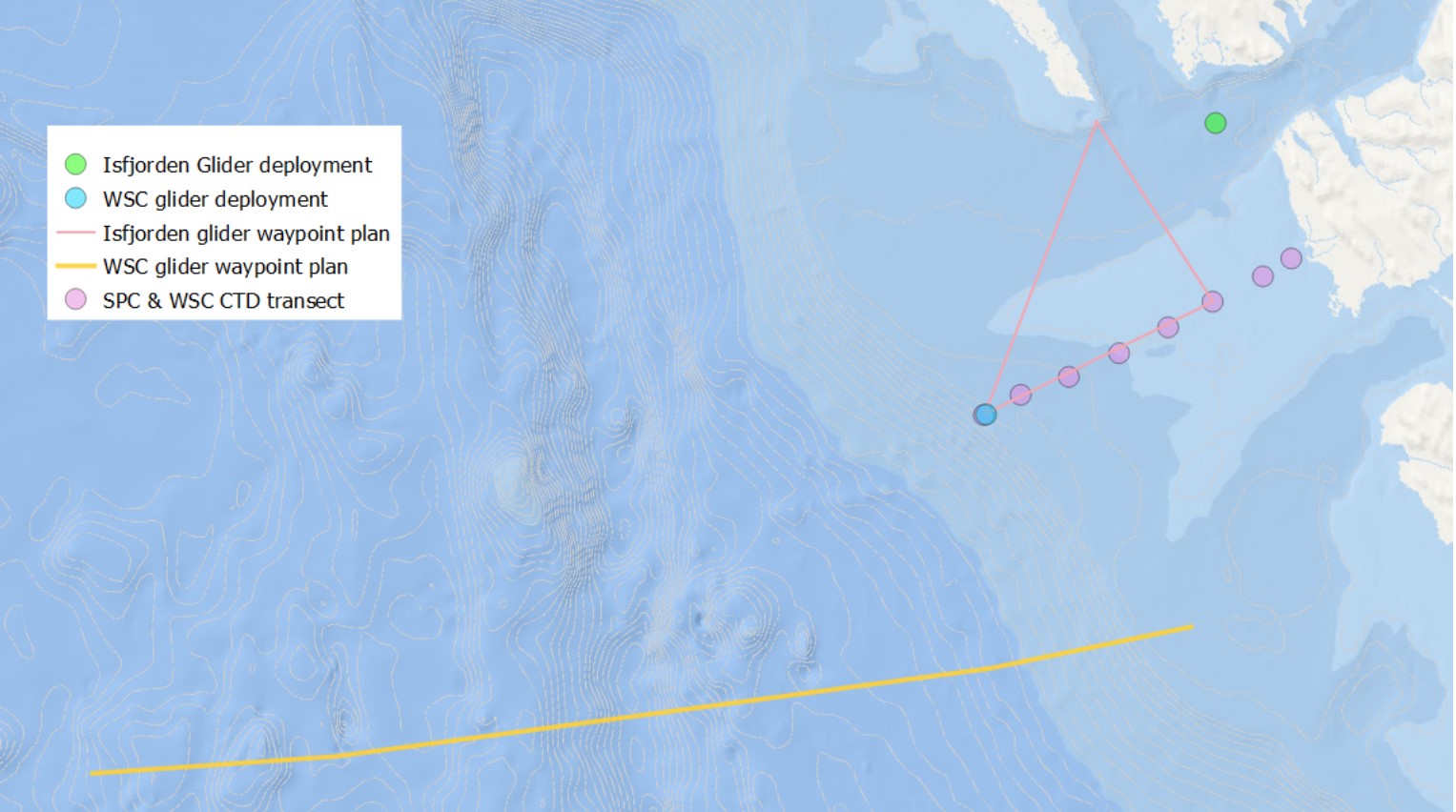The first ever SIOS access project to deploy ocean gliders!
by Fiona Elliott (University of Bergen) and Frank Nilsen (The University Centre in Svalbard)
Two gliders owned by the University of Bergen were planned for deployment during the AGF-214 cruise. A slocum glider, ‘Durin’ (the SOFT project glider), was to be to be deployed near Isfjorden and a seaglider, ‘SG561’, was to be deployed on the West Spitsbergen Current (WSC) glider transect.

After completing pre-deployment testing slocum glider ‘Durin’ was deployed on 09:58 28.09.2023 (All times in UTC), at 78° 07.034’N, 13° 30.052’E, in 362m. The vessel moved 1km downwind of the glider to complete a verification CTD cast. As this distance the vessel was still in range of the gliders radio signal so in water tests was carried out locally until the CTD cast was complete, at which point piloting responsibilities were transferred over to the remote team.
The glider made good progress towards the first waypoint South of Prins Karls Forland, but at 04:41 29.09.2023 at 184m a leak was detected in the forward compartment of the glider, this initiated the abort sequence and brought the glider to the surface. The glider was left to drift on the surface for several hours. As weather was favourable recovery was organised and the glider was recovered at 14:25 after grappling for the nose line from the starboard CTD cutaway.
In the lab the glider was opened to try and identify the cause of the leak. Due to the very small traces of water found internally and the subsequent bounce back of the leak detect sensor after the initial leak, it was thought the most likely cause of the leak was sublimating water or ingress through one of the hull O-rings. The glider team decided to refurbish the glider with new O-rings, install an additional desiccant pack and attempt to redeploy the glider.
Durin was redeployed at 06:35 2.10.2023 at 78° 07.013’N, 13° 27.997’E. Another leak abort occurred after 22 dives at 12:12 2.10.2023. Due to the weather conditions and other work priorities the vessel was not able to retrieve the glider up. The glider was left on the surface for several hours to ‘dry out’. Once dry enough, a new glider mission was carried out that instructed the glider to dive down to 10m, orientate itself horizontally and turn on the thruster for 30 minutes to move horizontally through the water at 10 m, then coming to the surface to receive an updated GPS position. Using this method, the glider was successfully piloted back into Isfjorden where it was recovered by a passing Kronpris Håkon at 01:57 5.10.2023 at 78° 15.118’N, 14° 13.138’E.
In spring 2024, we will try again with the second ever SIOS access project to deploy gliders! If at first you don't succeed, try try again!




























